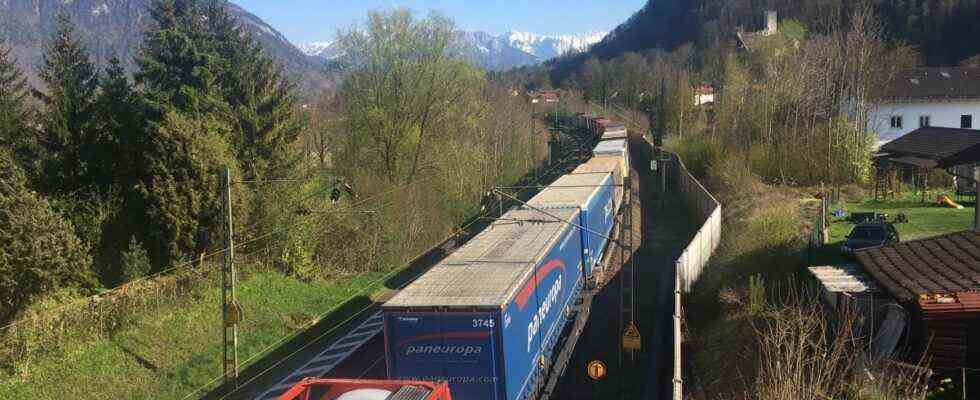It is a billion-dollar project that the federal government and Deutsche Bahn have in mind between Munich, Rosenheim and the border to Tyrol near Kiefersfelden: Two additional tracks are to create an efficient connection to the Brenner base tunnel in the direction of Italy in order to finally shift more transalpine freight traffic to the rails . The 54-kilometer section in the district of Rosenheim alone would cost at least seven billion euros, almost two-thirds of which will run in tunnels in order to protect the landscape and residents and to make the project politically feasible at all. However, the Bund Naturschutz and the Brennerdialog initiative, a merger of what are now 20 local citizens’ initiatives, have fundamental doubts about the need for new tracks. Now they even see themselves confirmed by the latest train forecast from the transport ministries and railway companies in Germany, Austria and Italy.
From this study on the Brenner Base Tunnel, which was presented in December, the German railway and federal government had deduced that the two existing tracks through the Bavarian Inn Valley might be sufficient as a feeder in the short term, but would not offer enough capacity in the long term. The traffic planner Martin Vieregg, on whose calculations BN and BIs have been based for a long time, described the study in a press conference on Tuesday as largely “substantial and properly done”, in contrast to previous scenarios from the Ministry of Transport, but drew exactly the opposite conclusions from it. Accordingly, even with the predicted increase in freight traffic, it would be sufficient to equip the two existing tracks with modern control technology, as the federal government and the railways decided long ago. If necessary, this route can always be supplemented later with a third track.
A high-speed road designed for up to 230 kilometers per hour, as is currently being planned, is considered unnecessary by Vieregg anyway, because passenger traffic across the Alps hardly plays a role in the official forecasts. According to the study, the promised reduction in travel time between Munich and Verona from more than five hours to two and a half hours would only be possible with a direct connection that was hardly in demand. For stops in Rosenheim, Innsbruck or Bozen, for example, the trains would have to use the old route and lose time there, which in turn reduces their attractiveness for travelers. “For this reason alone, the current planning of a high-speed line must be discontinued,” demanded BI spokesman Thomas Riedrich.
Freight transport plays the decisive role in the project anyway, and Vieregg, Riedrich and the BN state chairman Richard Mergner clearly criticize the study. This is based on constant economic growth, which Riedrich considers to be a question in itself and which does not have to go hand in hand with an increase in goods traffic. In addition, the assumption is wrong that freight traffic will shift from the Tauern route, which runs further east via Salzburg, to the Brenner route. On the contrary, with the ongoing expansion of the east freight corridor through Germany and the Munich-Mühldorf-Salzburg railway line, even more freight trains would take the 150-kilometer-shorter Tauern route towards Trieste.
Above all, however, Riedrich and BN boss Mergner point out that many trucks are currently accepting major detours for the much cheaper Brenner route. If this freight traffic is pushed onto the rails, then it will take the shortest route again – and that often leads via the Tauern route or via the Rhine rail and the Swiss Gotthard base tunnel and not through the Brenner base tunnel.
Its opening has now been delayed to 2032, and according to DB, the German supply should not be ready until 2040 at the earliest. The train forecasts discussed are also aimed at this year – a very short horizon for a “project of the century”. From the point of view of the citizens’ initiatives, the project is anyway “a major project from the past millennium” and a “dig for billions”, which is why the traffic light government in the federal government and Transport Minister Volker Wissing (FDP) would have to stop the planning and instead push ahead with the expansion of the stock. “A moratorium and a restart of the plans,” also demanded the BN boss and self-confessed rail friend Mergner. The Brenner feeder planned in this way is “just not suitable to serve as an example in a traffic turnaround”. In the end, the ten or twelve billion euros for this would then be missing for the railway expansion, where it would make much more sense.

